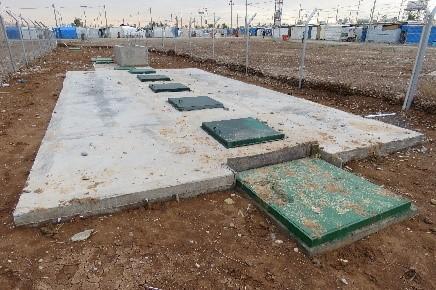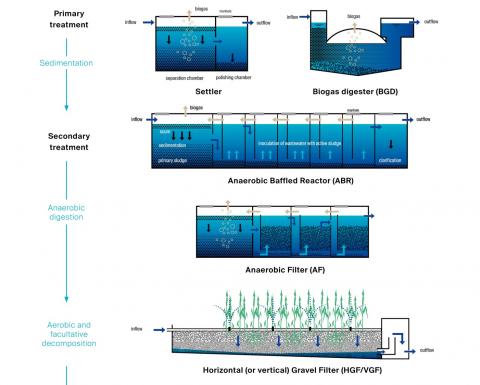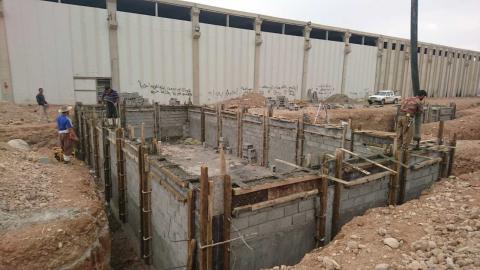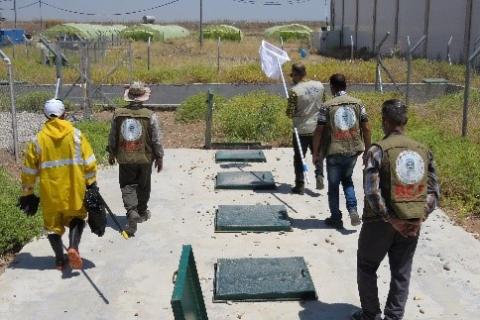Baharka Camp Grey-water Treatment System
Description of the emergency context
In Iraq thousands of people have been forced to leave their homes as the militant group Islamic State (IS) advances. Around 200,000 internally displaced persons (IDPs) are living in formal camps and over 100,000 IDPs living in informal sites throughout the country. From the initial displacement of 3 million persons from 2014 onwards, mass returns to areas of origin have occurred. However, there still remains a significant need to support those still displaced with humanitarian assistance
In 2019, the Baharka camp was competing 4528 individual in the camp
Description of the treatment process
Assessment & design (feasibility)
Greas trap : Traps oil and grease to be collected and removed from the wastewater before further treatment.
Composting pit : Absorbs smells coming from the ventilation pipe. The filter is filled with tree leaves to produce fertiliser.
Settling tank: Remove suspended solids by sedimentation. The low flow velocity in the settler allows settleable particles to sink to the bottom, while constituents lighter than water float to the surface.
Anaerobic filter : Traps particles and degrades organic matter by the active biofilm at the surface of the filter material.
Horizontal Plant gravel Filter : Is a large gravel and sand-filled basin that is planted with wetland vegetation. The material filters out particles and micro organisms and the vegetation transfers a small amount of oxygen to the roots zone allowing aerobic bacteria to colonise the area and eradicate organisms.
Collection tank : Stores the treated wastewater to provide a steady water supply.
UV light : Inactivates/Destroys pathogenic organisms to prevent the spread of water-borne diseases.
Construction
In September 2018 BORDA began construction of a waste water treatment facility in Baharka refugee camp for Iraqi IDP’s (Internally Displaced People). The system treats 20 m³ of grey-water per day. This water comes from the 298 camp dwellings housing 725 families. The treated wastewater replaces the 20 m³ of fresh water required to irrigate the existing 6 greenhouses inside the camp. The total cost of the project is equivalent to the cost of 3 years of water trucking




Add new comment